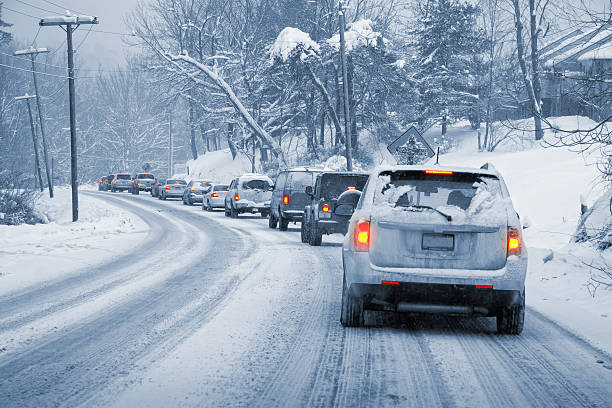
Top tips for winter driving

While many Canadians are used to long, cold winters, most will cringe at the thought of driving in extreme wintery conditions. Driving in snow or on ice is something most Canadian drivers will face at some point in their driving careers, and knowing how to react quickly and correctly could mean the difference between a few scary seconds and a potential crash.
Top tips for winter driving
Be cautious on the road
While this may seem like common sense, it’s incredibly important. Driving too close, speeding, changing lanes suddenly; these are all things that can result in collisions for you or other drivers around you. Stopping distances on icy roads are more than double that of dry roads. Leaving space, slowing down and being aware of the other vehicles on the road can lead to a safer, less stressful drive.
Use winter tires
It’s proven that winter tires provide more control in icy conditions. So much so that provincial governments offer rebates or insurance premiums to those who have winter tires installed on their vehicles. Though the price of these tires may seem high, it’s far cheaper than repair bills or increased insurance costs after an accident, not to mention the added peace of mind of having them. Learn more about winter tires here.
Know how to drive on black ice
Ice impacts your stopping distance and vehicle handling. Practice driving in slippery conditions like an empty, snow or ice-covered parking lot to help prepare you. Get a feel for how the car reacts when you brake suddenly, or when it starts to slide. It’s also important to practice this with your winter tires on. Snow tires are made of a compound that will stay soft and pliant in cold temperatures rather than turning hard in the cold like summer or all-season tires.
What is black ice?
Black ice is just like regular ice in that it forms on the surface of pavement after freezing rain or the re-freezing of snow or rain. It often occurs when the air temperature is warmer than the road temperature. Because of this difference, the liquid moisture in the air freezes as soon as it touches the road. Quick drops in temperature also cause black ice as water on the road has not had the chance to evaporate before the freeze. The reason it’s often referred to as black ice is that it forms without bubbles and is therefore completely transparent, making it difficult to see as it blends in with the surface.
How to spot black ice
Since black ice is almost fully transparent, trying to spot it before you drive through it is incredibly difficult. Instead, try to anticipate when and where it could happen. Bridges are common spots for ice to form since the temperatures from wind blowing underneath is generally cooler than the road itself. Early in the morning or at night is when more icy patches will occur since that’s when the temperature drops below freezing. Keep a close eye on vehicles in front of you too – if you notice them swerving suddenly, they may have found an icy patch on the road.
How to prevent skidding
If you do hit a patch of black ice when driving, it’s important to follow these steps:
Stay calm
React as little as possible and keep the vehicle headed straight
Steer straight, take your foot off the gas
Do not hit the brakes
Place your hands at nine and three o’clock This can give you better control of the wheel compared to the usually recommended ten and two
What to do if you start to slide
If you start to feel the back end of your car sliding out, remember:
Again, stay calm
Overcompensating due to gut reactions can cause the slide to lose full control.
Look where you want to go and not where you’re afraid of going
Though you may have the instinct to look around for vehicles on the road, keep your vision on your goal.
Gently give your steering wheel a slight turn in the same direction that your back end is headed
Struggling against that movement can send you spinning out of control.
Brake lightly if you’re skidding a lot
If your car has an anti-lock braking system (ABS), put your foot on the brake and apply even pressure – the ABS will pump the brakes for you. You’ll feel a pulsing under the brake pedal, which is the ABS engaging and disengaging your car’s brakes. Do not take your foot off the brake once you feel this start.
If you don’t have ABS, use the heel-and-toe method – this involves keeping your heel on the floor and using your toes to gently pump the brakes as you skid, keeping your steering wheel pointed in the direction that you want your car to go. If you feel your brakes lock, reduce the pressure on the brakes and repeat until your car stops moving.
